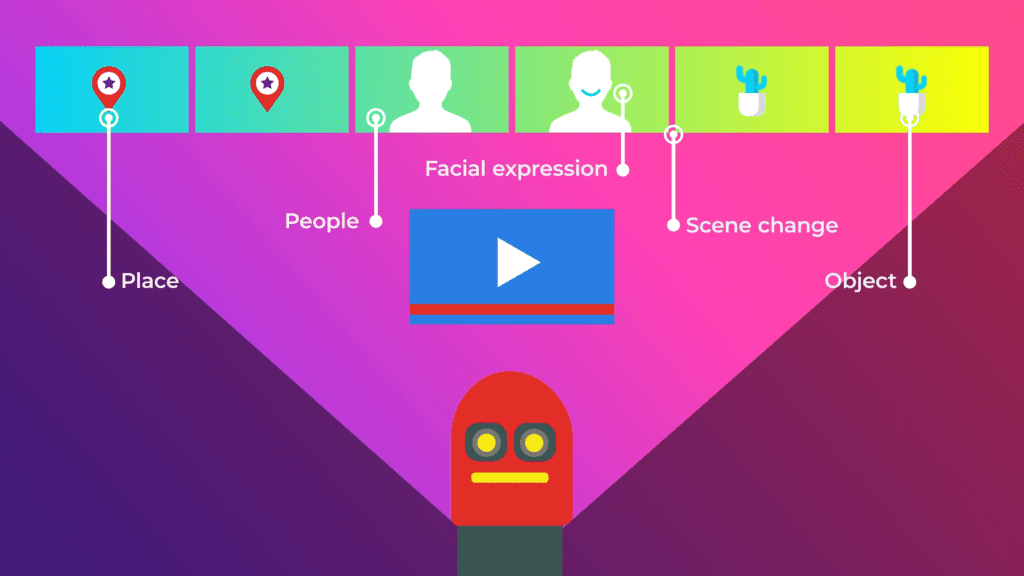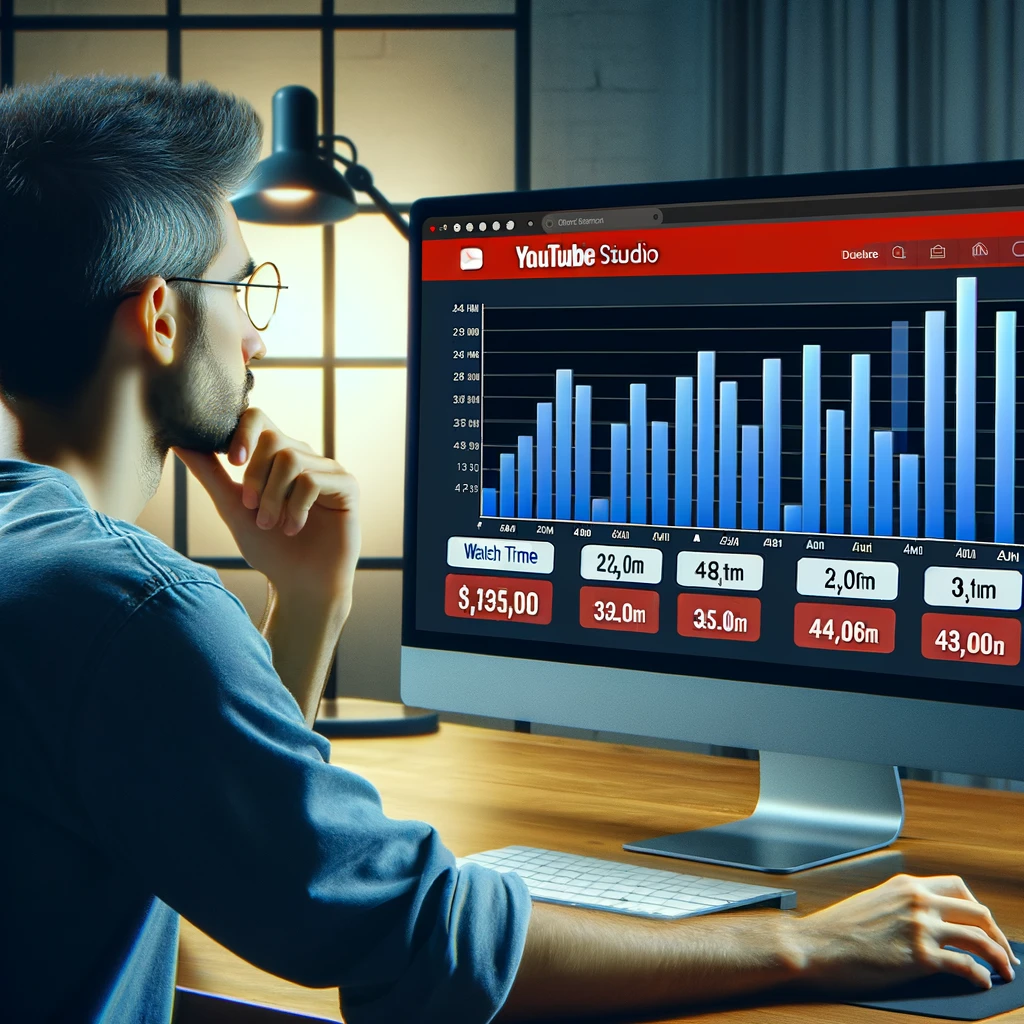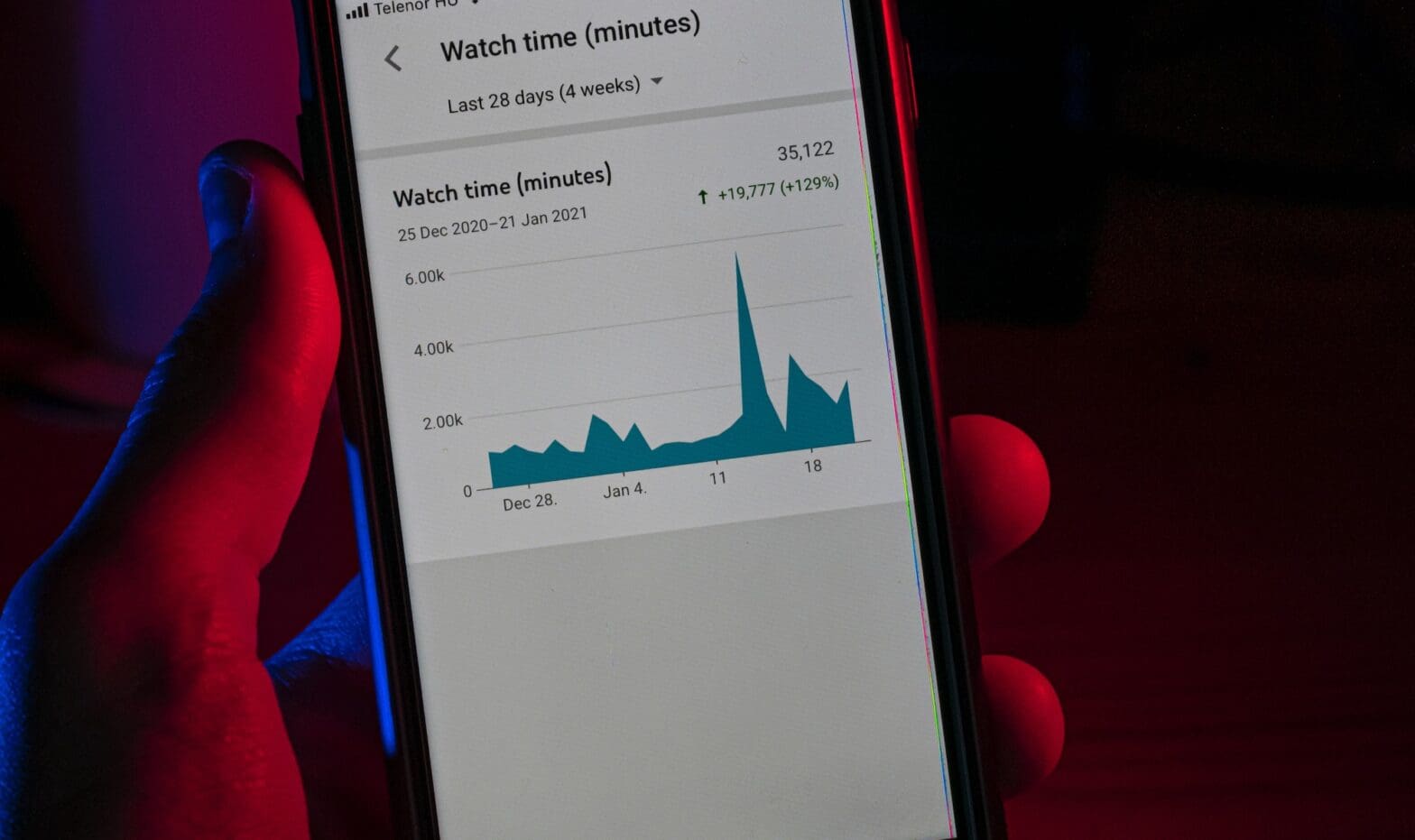The YouTube algorithm can feel like a tough nut to crack. It’s not that complicated though. If you make good content that viewers want to watch, and if you optimize that content so YouTube understands what it is, your channel will grow. And if you use TubeBuddy, your channel will grow faster.
This post will cover the top five things you need to know about the YouTube algorithm. It is especially valuable if you are a newer YouTube creator.
#1 YouTube Wants You to Keep Your Viewers on YouTube for as Long as Possible
The YouTube algorithm is designed to keep people watching videos on the platform for as long as possible, so YouTube can run ads and make money.
The goal is truly that simple. The data the algorithm uses to reach that goal is more complicated.
YouTube analyzes over 80 billion different signals from viewers each day. It examines how videos like yours perform with various audiences. This informs its machine learning algorithms which are always trying to deliver the right video, to the right viewer, at the right time.
If your videos keep viewers happy, those viewers will stay on YouTube longer. Your content will be aligned with YouTube’s main goal of retention, and the YouTube algorithm will like your content and want to share it.
If your main goal is to get viewers to visit your website, you encourage them to leave the platform. This is working against the goals of the YouTube algorithm. That’s not good.
Save the external links for your YouTube channel page.
get an unfair advantage on YouTube
Give your YouTube channel the upper hand and easily optimize for more views, more subs, and more of every metric that matters.
#2 The YouTube Algorithm Starts to Analyze Your Video the Moment You Upload
The YouTube algorithm knows more about your content than just what you say in the title, description, and tags. It’s more than just what you list in the metadata, like tags, titles, and descriptions.
During the upload process, YouTube collects information about the video frame by frame. This way it can identify scene changes, objects, places, people, and even facial expressions.

YouTube does factor in metadata, but for the most part, things like thumbnails, titles, and descriptions should be created with the viewer in mind to encourage them to click on your video.
After your video has been published, YouTube immediately analyzes viewer behavior: are people clicking on your videos? Are they watching all the way through? After they watch one video, do they watch another of your videos?
These are all signals that tell YouTube how satisfied viewers are with your content.
#3 Watch Time is the Main Ranking Factor
Once upon a time, YouTube ranked your videos based on views and clicks.
However, these metrics are too broad and too easy to be played — by creators, marketers, but also by scammers.
Misleading titles and thumbnails were being created to earn views when they had very little, or even nothing, to do with the content of the video.
This incentivized clickbait content and led to a lot of junk on the platform. Viewers weren’t happy and complained about the type of content being recommended on YouTube. As a result, YouTube evolved its algorithms to prioritize watch time over views and clicks.
Watch time is the time people spend watching your videos. You can see the watch time of a specific video and your entire channel in the Analytics section of YouTube Studio, with watch time represented in hours.

Watch time is still one of the most critical factors for ranking videos today. Therefore, YouTube has also included viewer satisfaction and responsibility data to assess the quality of the watch time. This is an effort to maximize viewers’ enjoyment on the platform, so they keep coming back and at the same time, minimize the spread of misinformation or harmful content.
It’s not a perfect system, and YouTube is always looking for better ways to measure the quality of watch time for the YouTube algorithm.
#4 There’s More Than One YouTube Algorithm
Another thing to keep in mind is that there isn’t just one YouTube algorithm. It’s a collection of different decision models personalized to the viewer and the perceived intent of the viewer at the time. They have different decision models for:
- Search
- Suggested
- Home
- Trending Tab
- Subscription Tab
- Notifications
Take Search, for example. When someone searches for a video, they give YouTube information about what they want. YouTube is then trying to find videos that will have the highest chance of matching what the viewer is looking for and will keep them interested.
YouTube is not just looking for videos with fully optimized titles and descriptions. It is also factoring in viewer signals like the watch time of a particular video for a specific query.
So if YouTube recommends your videos for a specific search term and people respond well to it, YouTube will continue to recommend the videos for that particular query.
And with Suggested, YouTube is trying to determine what video someone is most likely to watch after the video they are currently watching. This will include videos that are typically watched together, videos with related topics, and videos based on the viewer’s watch history to deliver a personalized recommendation.
This works similarly to other video platforms like Netflix; if you watch ‘Wonder Woman’ you may want to watch the sequel or watch another superhero film.
#5 The YouTube Algorithm Doesn’t Hate Small Creators
Creators with small channels can sometimes feel like the algorithm is out to get them. It’s not.
The more data YouTube has about your channel and how people respond to your content, the easier it will be for YouTube to predict how your videos will perform on the platform.
YouTube has a lot more data about larger channels and videos with millions of views. Still, if you create videos that people enjoy all the way through and keep them on the platform, your channel will grow, and YouTube will start to recommend your content.
YouTube is optimizing for viewers. Creators who make videos that optimize for viewers get noticed by the YouTube algorithm. It’s really that simple.
The YouTube Algorithm and Your Content
Create videos for a specific niche. Don’t switching between different topics. If viewers are confused about what content you’re making, the YouTube algorithm will be too… and it won’t have the information it needs to recommend your videos to viewers.
Make sure it’s obvious what your video is about in the thumbnail, title, and description. Give viewers what they came for and you’ll rack up watch time. Again, the YouTube algorithm loves watch time.
Analyze your audience retention. See where viewers are dropping off and learn the lessons that retention data teaches.
In short, if people are dropping off in your videos, your watch time suffers. When your watch time suffers, your attractiveness to the YouTube algorithm suffers.
Read more: 6 Ways to Generate 4,000 Hours of YouTube Watch Time FASTER!
get an unfair advantage on YouTube
Give your YouTube channel the upper hand and easily optimize for more views, more subs, and more of every metric that matters.
